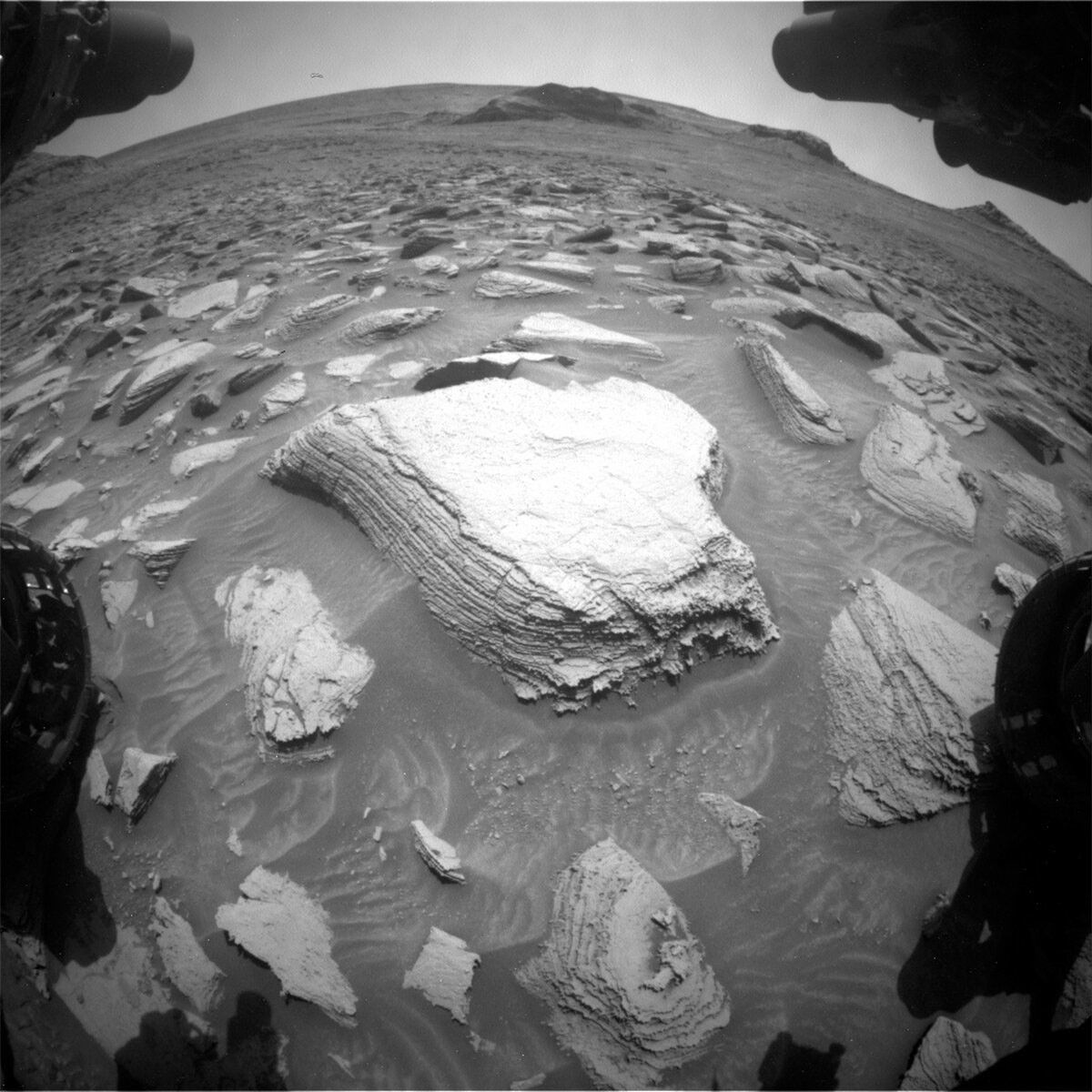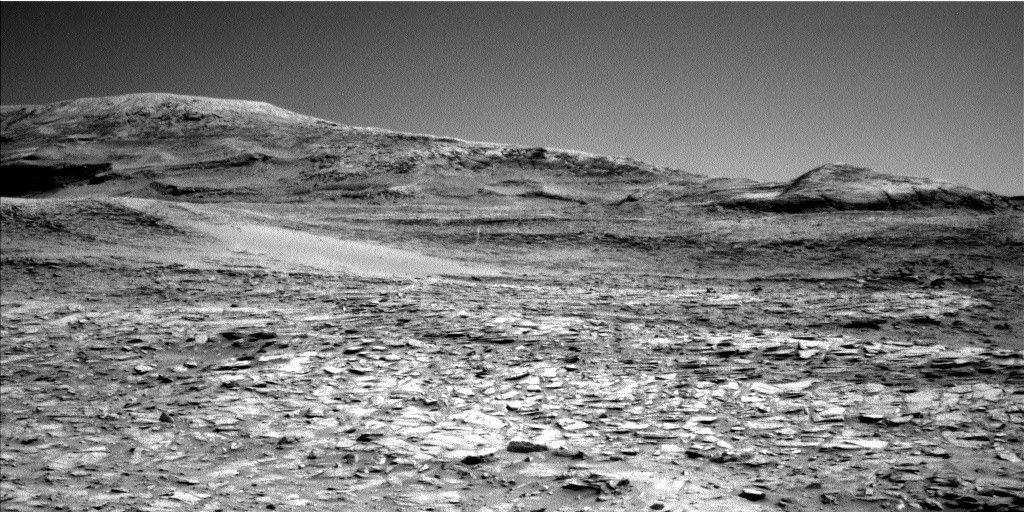This morning, I was delighted to see that the complex drive we had planned on Wednesday through some very rocky terrain successfully completed! Curiosity is currently parked in front of a finely layered rock that is dotted throughout with tiny nodules. The team was eager to investigate the fine scale textures and composition of this rock using all of Curiosity’s instruments, but unfortunately we discovered early in the planning day that we could not safely place the arm in direct contact with the rock; the rover’s wheels are precariously perched on other rocks, and we really don’t want our ~2,000 pound rover to accidentally shift its center of gravity when the arm is in contact with the ground. Our position was stable enough that we felt safe unstowing the arm and hovering above the ground, so we can collect images of the rock with our MAHLI hand lens from 5 cm distance. The science team felt this rock was interesting enough that we don’t want to drive away today, so we’ll instead reposition the rover to a more stable configuration in the hope that we can brush the rock and collect APXS data on Monday.
The specifics of today’s plan include ChemCam observations of two targets on the rock right in front of us named “Lagoa do Velame” and “Lagoa do Macaco,” as well as a third ChemCam autonomously chosen observation after we drive. MAHLI will also observe Lago do Velame and Lagoa do Macaco, plus a third target on the edge of this rock named “Tapirapeco.” Mastcam will document the nearby area with several mosaics, including a large mosaics and multispectral observation on a broken up nearby rock named “Waiokiepalul.” Navcam, DAN, RAD, REMS, and Mastcam observations of the environment around the rover will round out the plan.
Written by Abigail Fraeman, Planetary Geologist at NASA's Jet Propulsion Laboratory

































